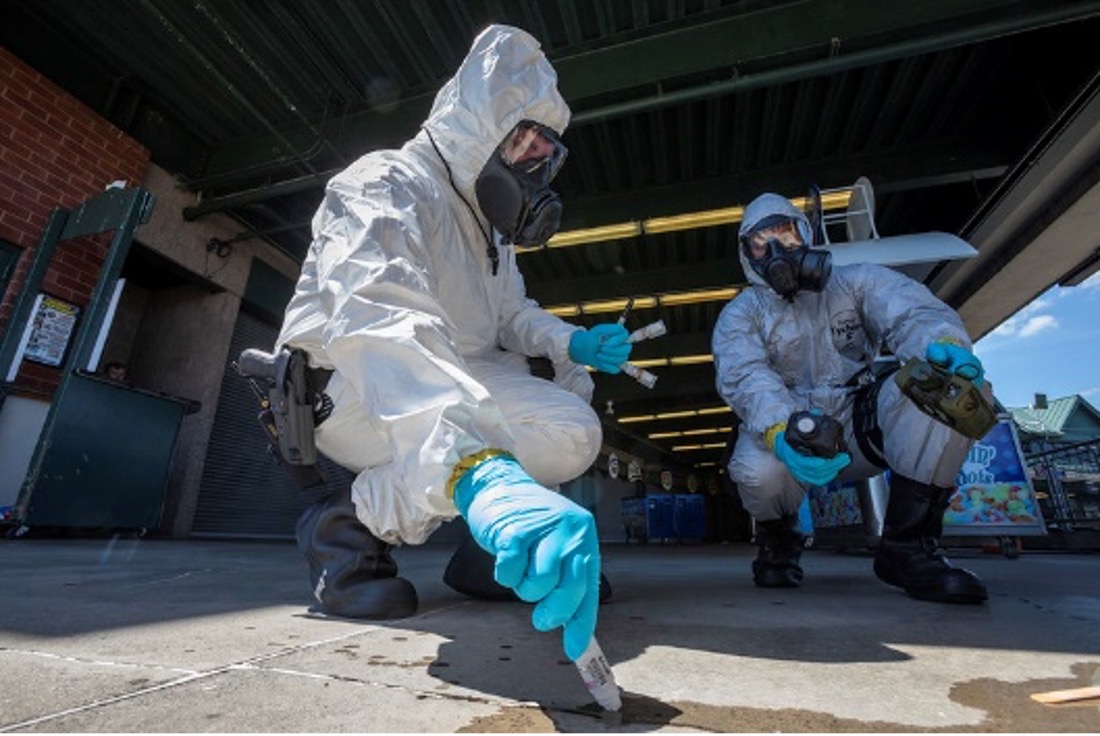In general, HazMat Teams have the following chemical detection capabilities and detection and sampling equipment and resources for use in substance identification and data collection (note that field devices are not as sensitive as and lack the broad chemical coverage of laboratory equipment):28
- Type I Teams – Designed to respond to, assess, and mitigate a large-scale, complex, and sustained-duration incident that may involve multiple hazards comprised of known and/or unknown hazardous materials, and especially including known or suspected weapons of mass destruction (WMD) materials and substances including CWAs.
- Advanced testing instruments, such as gas chromatography and mass spectrometry devices for increased ability to detect and identify contaminants
- Advanced real-time field instruments for perimeter air monitoring, such as surface acoustic wave (SAW) or nanotechnology devices; these are used to detect both liquid and gas CWAs and toxic industrial chemicals (TICs), organic and inorganic gases, explosives, illicit drugs, and in some instances, biological agents
- Type II Team equipment
- Type II Teams – Designed to respond to, assess, and mitigate a large-scale, complex, and sustained-duration incident that may involve multiple hazards comprised of known and/or unknown hazardous materials.
- Intermediate testing equipment, such as Fourier transform infrared spectroscopy (FTIR) or Raman spectroscopy devices, which can be used to detect and identify unknown solids, liquids, and gases including explosives, CWAs, TICs, and narcotics
- Intermediate real-time field instruments, such as volatile organic compound (VOC) instruments with parts-per-billion sensitivity
- Type III Team equipment
- Type III Teams – Designed to respond to, assess, and mitigate an incident for specific known hazardous materials.
- Basic testing instruments, such as chemical testing kits and testing strips
- Basic real-time field instruments, such as a multi-gas meter and Photo Ionization Detector (PID), enabling detection of common gases such as carbon monoxide (CO), carbon dioxide (CO2), hydrogen sulfide (H2S), sulfur dioxide (SO2), methane (CH4), and oxygen (O2), and VOCs at parts-per-million sensitivity, respectively
- Printed and electronic reference resources
- Safety data sheets – SDSs contain information on chemical properties, human health and environmental risks, and handling, storage, and transportation precautions (see Appendix D)

Footnotes
28. Occupational Safety and Health. (2008). Hazardous Waste Operations and Emergency Response. Publication 3114-07R.


